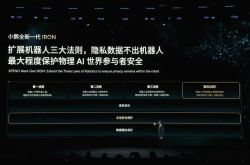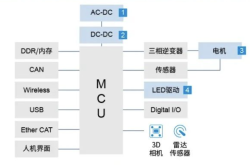Apple's self-developed baseband chip arrives, ending dependence on Qualcomm?
![]() 03/20 2025
03/20 2025
![]() 596
596

In the core technology field of smartphones, the baseband chip undoubtedly occupies a pivotal position, known as the "communication heart" of the phone. The baseband chip is the communication module in the phone, with the primary function of communicating with base stations of mobile communication networks, modulating, demodulating, encoding, and decoding uplink and downlink wireless signals.
A 5G baseband chip refers to a chip in a mobile phone that can demodulate, descramble, despread, and decode signals to support 5G networks, making it crucial for a phone to use 5G networks.
The core part of a baseband chip is mainly divided into two parts: the radio frequency (RF) part and the baseband part. The RF part modulates electrical signals into electromagnetic waves for transmission or demodulates received electromagnetic waves, and realizes up-conversion and down-conversion of baseband modulation signals. The baseband part generally processes signals, usually with a fixed-function digital signal processor (DSP) providing powerful processing capabilities. In modern communication devices, DSP is generally used for voice signal processing, channel coding and decoding, image processing, etc.
For a long time, Qualcomm has dominated the baseband chip market, with many mobile phone manufacturers having varying degrees of dependence on its baseband products, and Apple is no exception. However, in recent years, Apple has actively promoted the development of its self-developed baseband chips, especially with the debut of its first self-developed baseband chip C1, the industry has speculated: Can Apple end its dependence on Qualcomm with this? This issue is not only related to Apple's own development strategy but will also have a profound impact on the landscape of the entire smartphone industry.
01 A protracted game
The disputes between Apple and Qualcomm have a long history, mainly focusing on the patent licensing model.
Apple believes Qualcomm's long-standing patent licensing strategy is unreasonable, and the excessively high patent fees have put tremendous pressure on Apple in terms of cost control.
This dissatisfaction ultimately erupted in 2016, when Apple began seeking to break free from its dependence on Qualcomm's baseband chips, starting with the introduction of Intel baseband chips in the iPhone 7 series. A study shows that in general usage scenarios, the Qualcomm baseband version of the iPhone 7 performs 30% better than the Intel baseband version. Moreover, in weak signal conditions, the Qualcomm baseband version outperforms the Intel baseband version by 75%. It is claimed that the X12 baseband provided by Qualcomm can achieve a network speed of up to 600Mbps, but the XMM 3360 baseband supplied by Intel has a maximum network speed of only 450Mbps.
In 2017, the conflict between Apple and Qualcomm further escalated, with their patent disputes becoming public. Apple initiated global lawsuits against Qualcomm, accusing it of monopolistic behavior in its patent licensing model, while Qualcomm threatened to cut off the supply of baseband chips. This conflict further strengthened Apple's determination to reduce its dependence on Qualcomm's baseband chips. In 2018, Apple resolutely initiated a plan to develop its own baseband chips, aiming to fundamentally address the situation of being constrained by others.
In April 2019, Apple and Qualcomm reached a settlement on patent issues, temporarily bringing an end to this years-long dispute. However, Apple did not abandon its path of self-developing basebands; instead, three months later, it spent $1 billion to acquire Intel's baseband business, acquiring over 17,000 patents and more than 2,200 employees, significantly enhancing its research and development capabilities and technological reserves, and accelerating the self-development process. This also indicates that although Apple reached a compromise with Qualcomm in the short term, its goal of achieving autonomous control over baseband chips has never changed in the long run.
02 What are the difficulties in self-developing baseband chips?
Apple originally planned to launch its first modem in 2021 but only officially launched it this year. Even a powerful company like Apple has encountered setbacks in the research and development process. This is because the threshold for developing modems is much higher than anticipated.
The first is the issue of compatibility.
5G baseband chips need to be compatible with 2G/3G/4G networks simultaneously, which places extremely high demands on chip design. The signal processing methods, frequency band ranges, and transmission protocols of different communication technologies are vastly different. Integrating these technologies into a single chip requires extremely high flexibility and extensive technical coverage capabilities.
For example, 2G networks are mainly used for voice calls, with relatively simple signal processing; while 5G networks focus on high-speed data transmission, with extremely complex technical requirements for signal modulation and demodulation, encoding and decoding. When developing its own baseband chips, Apple needs to ensure that the chips can seamlessly switch between different communication technologies, providing users with a stable and smooth network experience, which is undoubtedly a formidable task.
The second is the patent barrier.
In the field of baseband chips, patent accumulation is an important manifestation of a company's core competitiveness. Industry leaders such as Qualcomm and Huawei have invested heavily in research and development over the years and own a large number of patents related to baseband chips.
In contrast, Apple has a relatively small number of patents in the field of baseband chips, with a significant gap in technical advantages. This exposes Apple to the risk of patent infringement when developing its own baseband chips. To break through this limitation, Apple needs to invest substantial resources in patent research and development and cross-licensing negotiations, aiming to avoid infringing on others' patents while striving to build its own patent moat. This process not only consumes time and funds but is also fraught with uncertainty.
Lastly, it needs to support global network standards.
Different countries and regions around the world adopt various network standards, and baseband chips need to support multiple network standards to meet the needs of different operators. This means that Apple needs to conduct in-depth research on the network environments around the world and perform a large number of field tests and adjustments to ensure that the chips can operate stably under various network conditions.
For example, the network frequency bands widely used in some European countries differ from those in Asia and the Americas, and Apple's baseband chips need to be able to adapt to these different frequency bands to ensure that users can connect to the network normally while traveling abroad.
This process requires cooperation with numerous global operators and a vast amount of testing work. Any problem in any link may affect the applicability and stability of the chips.
03 How does Apple's self-developed baseband C1 perform?
On February 20, Apple released the iPhone 16e model, which is the first to carry the self-developed 5G baseband chip C1, marking a crucial step in the field of communication chips and signaling its gradual reduction in dependence on Qualcomm chips.
So, how does Apple's C1 chip perform?
As Apple's first self-developed 5G baseband chip, Apple C1 is based on TSMC's 4nm process (Qualcomm Snapdragon X75 is also a 4nm process). The accompanying self-developed FR1 radio frequency chip is based on TSMC's 7nm process (Qualcomm SDR875 is 14nm).
Recently, domestic and foreign media have shared teardown content of the iPhone 16e and conducted relevant evaluations of baseband performance. From the test results, the cellular network speed of the iPhone 16e is basically the same as that of the iPhone 16, but its signal performance is slightly inferior, failing to bring significant improvements.
According to actual measurements of 5G power consumption between Apple's C1 and Qualcomm chips, under the same 5G cellular network conditions, whether used in environments with better or poorer signal strength, the cellular network power consumption of the iPhone 16e is significantly lower than that of the iPhone 16 equipped with Qualcomm chips and the Xiaomi 15's X80 chip. Data shows that the power consumption of C1 is approximately 17% to 20% lower than that of Qualcomm. Apple C1 indeed consumes less power in different signal environments, which is consistent with Apple's promotion of its low power consumption. This optimization is undoubtedly one of the factors that enable the iPhone 16e to achieve longer battery life.
It is important to note that the C1 chip does not support millimeter-wave (mmWave). Millimeter-wave is a high-frequency band of 5G, with frequencies above 24GHz, characterized by extremely high bandwidth and fast speeds (theoretically up to 10Gbps) but poor penetration and limited coverage, easily blocked by walls, trees, or even human bodies. Therefore, it is mainly suitable for high-density areas such as city centers, stadiums, and airports.
The C1 chip's lack of support for millimeter-wave means it can only use the Sub-6GHz frequency band (frequencies below 6GHz), with a speed limit of about 4-5Gbps. The advantage is wider coverage and stable signals.
The United States is the most active country in deploying millimeter-wave, especially operators like Verizon and AT&T who have invested heavily in urban areas. If you use the iPhone 16e in places like New York or Los Angeles, you may find that the peak speed is not as good as that of Android flagship phones with Qualcomm basebands (such as X70), especially in high-speed areas where the 5G signal is labeled as "5G Ultra". The actual experience may be that the download speed is stuck at 1-2Gbps, while competitors can reach 3Gbps+.
Both South Korea and Japan have deployed millimeter-wave networks in some cities (such as Seoul and Tokyo), especially in commercial areas and transportation hubs. The shortcoming of C1 will prevent Apple users from enjoying "extreme 5G" in these scenarios.
China's 5G mainly relies on Sub-6GHz, with limited millimeter-wave deployment (mostly in the pilot stage, like in a few areas of Shanghai and Beijing), so the impact is not significant. Europe also mainly uses Sub-6 with less millimeter-wave.
Behind this may be Apple's strategic choice: the global distribution of millimeter-wave base stations is limited, and it is of little significance to most users in the short term. Rather than investing resources in pursuing "flashy technology", it is better to first optimize Sub-6 to cover a wider range of needs.
04 Why is Apple committed to self-developing basebands?
Firstly, it enables deeper integration of software and hardware.
Apple has always been committed to developing its own mobile system-on-chip (SoC), but due to the lack of an autonomous baseband chip, it can only use Qualcomm's baseband as an external component. This external design has certain drawbacks, such as increasing the phone's power consumption and occupying space, and is also not conducive to the cooperative work between chips. By developing its own baseband chip, Apple can better integrate the baseband and SoC, or even integrate the baseband into the SoC. This not only optimizes the communication efficiency between chips, reduces data transmission latency, but also lowers power consumption and enhances the overall performance of the phone.
As a self-developed chip by Apple, its C1 can achieve better software and hardware integration with the iOS 18 system, improving the overall energy efficiency of the phone. According to Arun Mathias, Apple's vice president of wireless software, when the iPhone encounters a large influx of data, stronger software and hardware integration allows C1 to make autonomous decisions about which data is more important, elevating the priority of key data streams.
This "chip-system-antenna" full-link design is an advantage that third-party suppliers find hard to match. The launch of Apple's C1 baseband pushes it towards a more complete vertical integration system in the core hardware field.
Secondly, it reduces costs.
The research and development and production costs of Qualcomm's baseband chips are relatively high, and Apple needs to pay exorbitant fees to procure Qualcomm's baseband chips. Moreover, Qualcomm charges patent fees as a percentage, further increasing Apple's cost burden.
Although the initial R&D investment for C1 is high (acquiring Intel cost $1 billion, with subsequent R&D estimated to exceed $5 billion), the long-term returns are considerable after saving on Qualcomm's patent fees (around $5-10 per unit). In comparison, while the procurement price of Qualcomm's baseband ($20-30 per chip) plus patent fees is more straightforward in the short term, Apple clearly values the strategic value of self-development more.
In the long run, Apple's self-developed C1 baseband chip can effectively reduce costs. As the self-developed technology continues to mature and economies of scale emerge, Apple's costs in the baseband chip sector will gradually decrease. For example, when Apple can mass-produce its self-developed baseband chips, the production cost per chip will drop significantly. Moreover, after breaking free from Qualcomm's dependence, Apple no longer needs to pay high patent fees, which will save Apple a lot of money and increase its profit margins.
Lastly, it is part of Apple's longer-term layout.
The development of the C1 chip may also mean that MacBook will have cellular network connectivity. For wearable devices, where battery life and space are extremely precious, the application of self-developed modems will also bring many interesting possibilities. The successful implementation of C1 across the entire product line will allow Apple to create a pure-blood software and hardware system.
The essential function of a baseband chip is still to translate and encode signals. The introduction of AI will make information translation and transmission more efficient. Apple's main advantage in AI is its large number of high-end phones as hardware carriers. Based on this carrier, Apple strengthens its control over key chips for signal transmission, forming a unique advantage compared to the AI ecosystems of other tech giants.
05 Apple's next-generation self-developed baseband chips, a long road ahead
Although Apple's C1 baseband chip has a certain performance gap compared to Qualcomm's products, Apple has not stopped its research and development efforts. Qualcomm recently released its new X85 5G modem and radio frequency system, equipped with a 5G AI processor, supporting 5G millimeter-wave (mmWave), Sub-6GHz frequency band with a download bandwidth of 400MHz, and satellite connectivity, with a maximum downlink rate of up to 12.5Gbps and an uplink peak rate of up to 3.7Gbps, demonstrating strong technical capabilities. In contrast, Apple's C1 chip does not have advantages in these aspects.
As the first self-developed baseband, C1 is the starting point for Apple to break free from Qualcomm's dependence and a test field for ecological integration. The next-generation C2 and C3 may add support for millimeter-wave and even be integrated into A-series chips in the future. It is now clearly a compromise, not for testing the waters, but for rapid implementation. In the long run, if the C series catches up with its competitors, combined with the support of Apple's ecosystem, the prospects are promising. However, this process requires Apple to continuously invest substantial R&D resources and overcome obstacles in technology, patents, and the market. In the future, we will wait and see if Apple can reshape the competitive landscape in the smartphone market with its self-developed baseband chips.




